The Future on Your Wrist: Wearable Technology’s Impact on Traveller Experience

Updated On: April 05, 2024 by Raghda Elsabbagh
As we glance into the horizon of travel technology, wearable devices are becoming integral to the modern traveller’s experience. No longer confined to the realms of fitness tracking and notification nudging, these pieces of technology now play a pivotal role in how we navigate, experience, and share our journeys. From smartwatches that serve as boarding passes to jackets that guide us through foreign streets, wearables are providing travellers with unprecedented levels of convenience and personalisation.
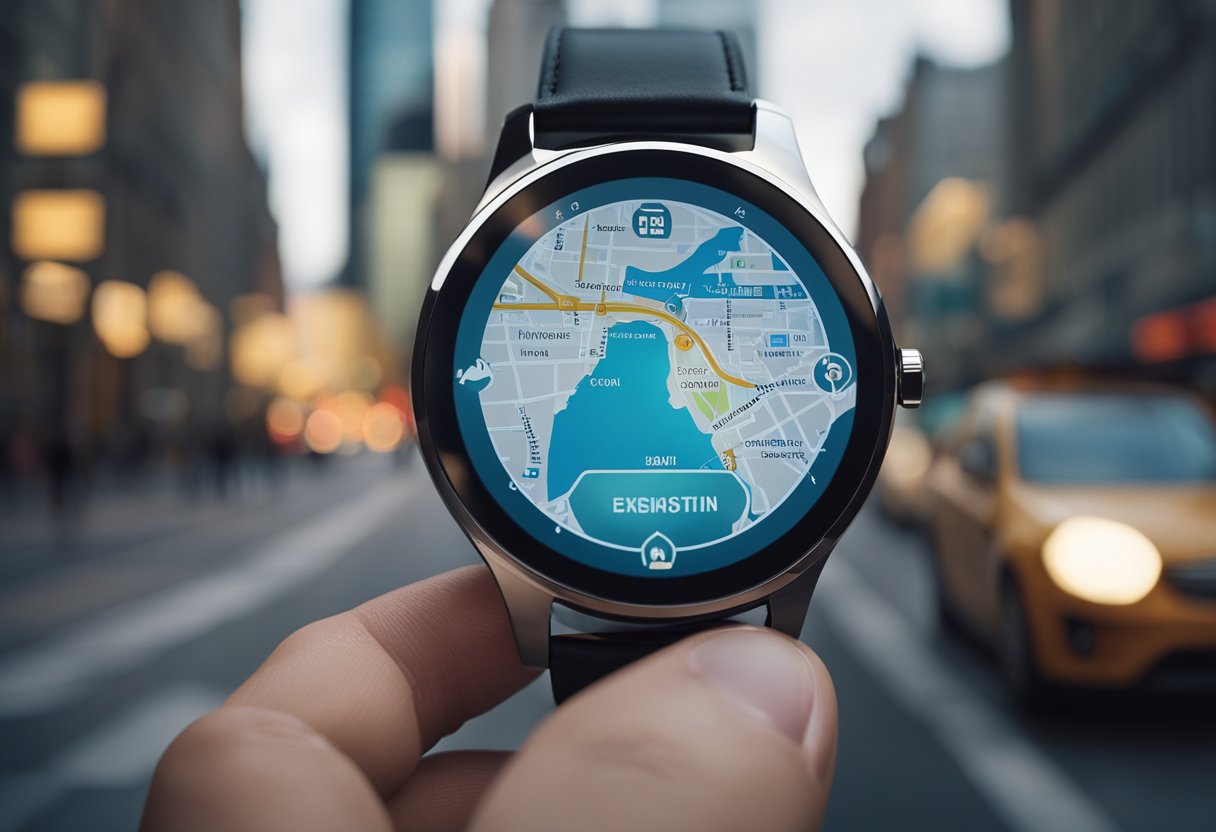
The integration of augmented reality (AR) and virtual reality (VR) into wearable devices is set to revolutionise the way we explore new destinations. By overlaying digital information onto the real world, travellers can access interactive maps and language translation at a glance, enriching their experience without disrupting the journey. Moreover, the convergence of fashion and functionality means these devices not only make travel smoother but also complement our style.
Table of Contents
The Advent of Wearable Technology
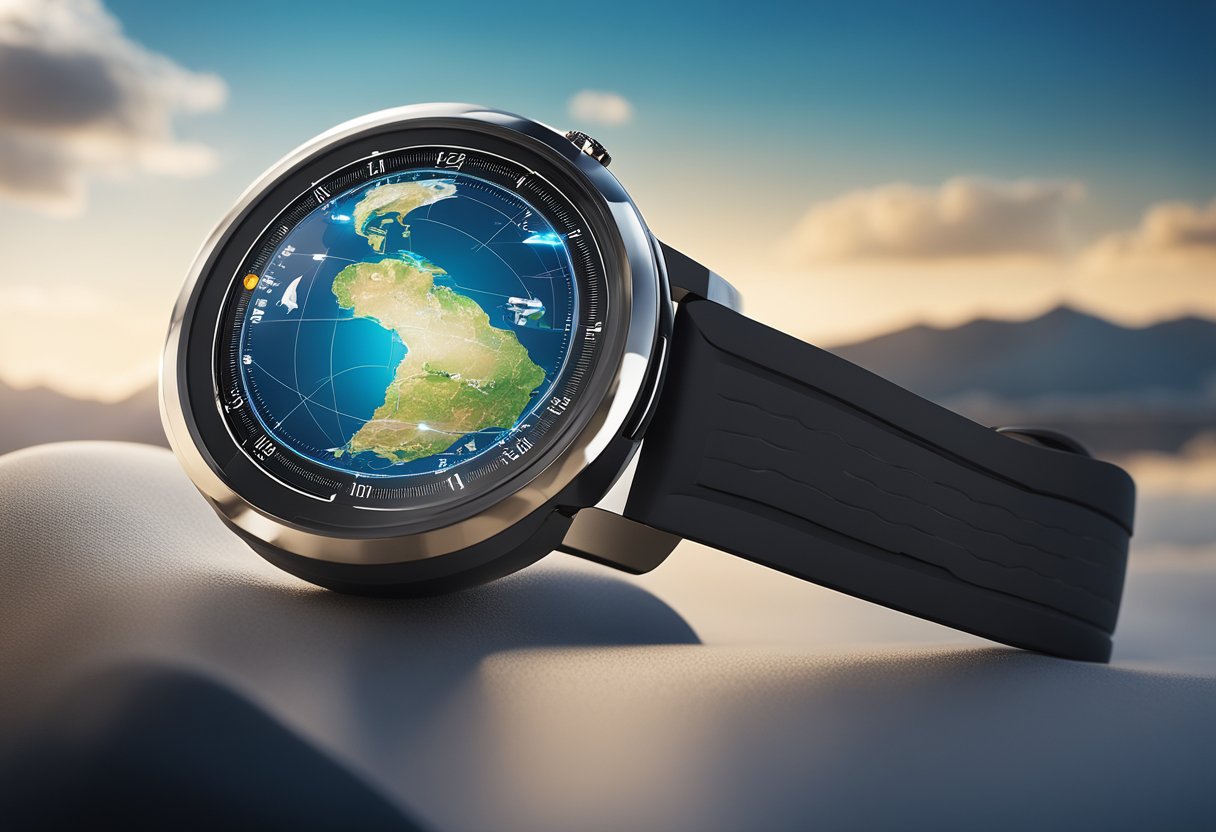
The emergence of wearable technology has revolutionised the way we interact with our environment and each other. Initially limited to simple wrist-worn pedometers, today’s wearables incorporate a seamless blend of design and function, embodying the integration of technology into our daily lives.
Smartwatches, such as those developed by Apple, exemplify this convergence, offering not only timekeeping but a suite of sensors that monitor an array of metrics. These devices track our physical activity, heart rate, and even sleep patterns, providing us with reliable data to help improve our well-being.
- Apple’s design ethos has always placed a high emphasis on the aesthetics and functionality of their products, and its wearables are no different. Sleek interfaces and intuitive controls make their watches iconic and user-friendly.
The potential for wearable tech in travel is immense. With the right applications, they could provide real-time language translation, navigation, and a variety of travel-related alerts directly to our wrists. The future wearables are expected to become even more integrated into our personal ecosystem, delivering enhanced and possibly life-saving features.
- Predictions for future wearable technology include:
- More advanced sensors for environmental awareness
- Improved battery life for longer travel
- Greater personalisation of travel experiences through AI
Through these innovations, our experiences are enriched, giving us the tools to navigate and explore the world with confidence and ease. Wearable technology is no longer just an accessory; it’s an integral part of the journey for the modern traveller.
Innovations in Travel Tech
The travel industry is continuously revolutionising the way we explore the world, and much of this innovation is driven by advancements in wearable technology. Wearable tech in travel is not just about convenience; it’s about enhancing the entire travel experience with a mixture of artificial intelligence (AI), machine learning (ML), and connected devices.
Contactless Interactions: We’re seeing a surge in contactless payments and check-ins, reducing the need for physical exchange and increasing security. Travel necessities such as boarding passes and hotel keys can now be stored digitally on wearable devices.
AI and ML: The integration of AI and ML into travel tech has led to smarter recommendations and personalised experiences based on a traveller’s preferences and past behaviour. This personalisation aspect plays a crucial role in increasing revenue, as tailored options often lead to customer satisfaction and repeat business.
Translation and Navigation: With wearables, language barriers are becoming a thing of the past thanks to real-time translation features. Travellers can communicate effortlessly, making foreign travel more accessible and enjoyable.
| Feature | Benefits |
|---|---|
| Contactless Payments | Enhanced security, speed, and convenience |
| AI-Powered Apps | Personalised travel experiences |
| Real-time Translation | Overcome language barriers |
Our mission is to embrace these technological strides, providing travellers with invaluable tools that ensure their trips are seamless, secure, and thoroughly enjoyable. As we look to the future, the horizon is bright with the promise of ever-more innovative solutions that will continue to transform our journeys.
Health Monitoring on the Go

Travel often means leaving the comfort of our familiar surroundings, but with the advent of wearable technology, we can continuously monitor crucial aspects of our health wherever we go. Fitness trackers and health monitors have become our companions, seamlessly integrating health monitoring into our daily activities.
- Heart Rate: We can keep an eye on our heart rate through these devices, ensuring that we stay within a safe range, particularly during physical activities or while exploring new terrains.
- Stress Levels: Monitoring stress levels has never been simpler. These gadgets analyse physiological data to indicate when our stress is on the rise, prompting us to take a moment to relax or breathe deeply.
- Body Temperature: Keeping track of body temperature can alert us to potential health issues. Wearable tech enables us to manage our well-being preemptively, staying ahead of any sudden illness that could disrupt our travels.
The functionality of health monitors continues to evolve. They not only track our fitness levels but also ensure our safety by detecting falls or sudden health events and sending alerts to emergency services or loved ones.
- Health Monitoring Features:
- Continuous tracking: Real-time health data at our fingertips.
- Emergency notifications: Automatic distress signals for swift assistance.
- Trend analysis: Understand our health patterns over time.
The future of travel safety and preparedness is on our wrists, in our pockets, and integrated into our daily wear. With the evolution of wearable devices, we can now navigate the globe with an added layer of security, confident that we’re not just exploring the world but doing so while safeguarding our health.
Enhancing Travel Experience with AR and VR

We’re on the brink of a travel revolution, with wearable tech like AR and VR gadgets offering more immersive travel experiences than ever before. These technologies aren’t just futuristic concepts—they are here, enhancing journeys across the globe.
Augmented Reality for Navigational Aids
Augmented Reality (AR) has transformed how we navigate new destinations. By overlaying information onto our real-world view through a smartphone or AR glasses, AR acts as a dynamic travel guide. With GPS tracking, points of interest are no longer just dots on a map but are brought to life, providing historical context, directional cues, and local stories directly to our eyes. AR makes reading a traditional map redundant, making exploration effortless and more meaningful.
Virtual Reality for In-Flight Entertainment
On the other hand, Virtual Reality (VR) has redefined in-flight entertainment. We no longer have to settle for the small screens on the back of seats. Instead, with VR headsets, we can enjoy an array of destinations or watch films in what feels like a private cinema. This immersive escape not only makes long-haul flights more bearable but can also introduce us to destinations and experiences we might have never considered before. The sense of ‘being there’ that VR provides is an exceptional way to preview a place before arriving. Through these technological wonders, travel has gained an extra layer of depth, opening up new ways for us to connect with our destinations.
Revolutionising Communication with Wearables
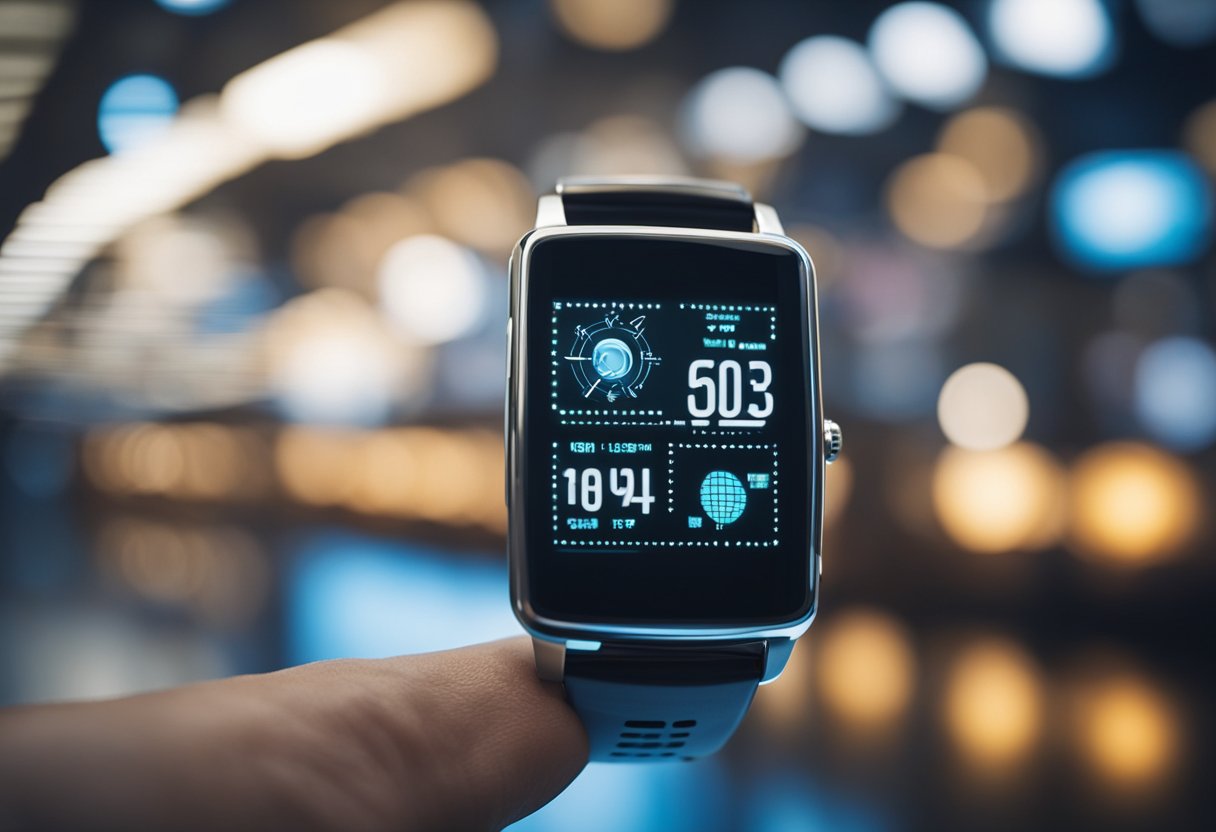
In the ever-evolving world of travel, we’re witnessing a transformation in communication thanks to wearable technology. Devices worn on the wrist are not just for telling time or tracking fitness; they’ve become powerful tools for interpersonal exchange, breaking down language barriers with real-time translation.
Imagine strolling through a bustling market in a far-off country where the local dialect is beyond our understanding. Here, wearables function as seamless interpreters. At the tap of a screen, phrases are translated audibly, enabling us to interact with vendors and locals with unprecedented convenience.
| Feature | Benefit |
|---|---|
| Instant Translation | Reduces miscommunication |
| Lightweight & Accessible | Enhances travel convenience |
| Varying Language Support | Promotes inclusivity across cultures |
Devices equipped with real-time language translation are fostering a new era of global tourism. We can engage in meaningful dialogue with people around the world, irrespective of our mother tongues. The seamlessness of such interactions enriches our travel experiences and broadens our cultural horizons.
Wearable tech ensures we remain connected, informed, and linguistically capable. This evolution in communication wearables is not just changing how we interact during our travels; it’s reshaping our connection with the world, making every journey more immersive and inclusive.
Seamless Payments and Identification

In the world of travel, our experience has been transformed by the rise of wearable technology, which offers seamless payments and identification. With the tap of a smartwatch, travellers can now breeze through transactions and checkpoints with unprecedented convenience.
- Contactless Payments: We’ve seen how wearables equipped with Near Field Communication (NFC) allow for quick and easy transactions. Simply by touching a smartwatch to a payment terminal, the payment is completed without the need to fumble for cash or cards.
- Technology Integration: Integration of payment systems into wearable devices means travellers carry less physical burden, making travel lighter and more enjoyable.
- Enhanced Security: These devices aren’t just convenient; they also provide enhanced security. Advanced security measures like biometric authentication often protect payment information. The technology is designed to make data breaches or theft highly challenging.
- Identification: Apart from payments, wearables are being developed for digital identification, streamlining processes such as hotel check-ins and border control, thus reducing wait times and hassle.
- Smartwatches Leading the Charge: The popularisation of smartwatches has been at the forefront of this transformation. They are no longer just fitness trackers but powerful tools that enrich our travel experiences.
Our travels have become more about the experience and less about the logistics. With our wrists acting as both wallet and ID, we can enjoy a more immersive experience focused on the destination rather than the administrative aspects of travel. This technological leap has undeniably pushed the boundaries of convenience and efficiency, setting a new standard for future travel.
Fashion Meets Functionality in Wearables
In the domain of travel, having both hands free and pertinent information at a glance is paramount. Wearable technology marries these needs with the modern thirst for style. Smart jewellery and watches stand out as travel essentials, providing not only a fashion statement but also seamless access to functionality.
- Watches: Once simple timepieces, they’ve transitioned into smart devices offering travellers navigation, payment, and connectivity without the need to reach for a phone.
- Jewellery: Beyond its aesthetic appeal, smart jewellery now combines artful design with practicality, such as alert notifications and fitness tracking.
In creating accessories that are both fashionable and functional, the focus is on the blend of traditional aesthetics with technological capabilities. For example, high-end watches now come with interchangeable straps, touchscreens, and a host of sensors while maintaining a sleek look.
| Feature | Watches | Smart Jewellery |
|---|---|---|
| Style | ✓ | ✓ |
| Tech | ✓ | ✓ |
| Travel | ✓ | ✓ |
We see the lines between technology and textile continue to blur. This confluence is evident in how designers are embedding tech into fabrics themselves. The rise of wearable tech in this arena highlights the seamless integration into everyday attire.
Ultimately, wearables in travel offer a dual proposition: stay connected effortlessly and express personal style, ensuring that every journey is not just about the destination but also about how we interact with the world in transit.
Strategic Marketing through Wearable Data
In today’s interconnected world, wearable technology offers us a wealth of data that is revolutionising the travel industry. Strategic marketing now leverages this data to tailor unique experiences for travellers.
With wearable devices, marketers gain access to precise metrics that reflect users’ behaviours and preferences. By gathering accurate information such as location, activities, and interests, travel companies can create personalised marketing campaigns. Whether it’s suggesting a local event or a hidden cafe, wearables allow for a level of personalisation previously unattainable.
Marketing professionals use this data to enrich the traveller’s journey:
- Personalised Recommendations: Suggesting activities based on real-time data and past preferences.
- Targeted Advertising: Offering special deals when travellers are in proximity to a service or product.
- Improved Services: Enhancing the travel experience based on insights from wearable tech.
Incorporating machine learning, companies can predict future behaviours and refine their marketing strategies further. This brings about a level of interaction that is not just reactive but also predictive, allowing brands to anticipate needs and offer solutions before the traveller even realises they want them.
Through the strategic use of data from wearables, we’re not only personalising the travel experience but also elevating it to new heights. Wearable tech is transforming the way we explore the world, and we are at the forefront of this exciting frontier.
Key Players in Wearable Tech Industry
The wearable tech industry has seen significant growth, propelled by innovators and market leaders who are shaping the way we travel. Let’s explore some of the pivotal companies and products that are at the forefront of this technological revolution.
Apple’s Foray into Wearables
Apple, with its launch of the Apple Watch, has become a dominant force in the wearables market. The product has set a high standard with its blend of style, functionality, and extensive features. The Apple Watch has been pivotal in making wearable tech more mainstream, particularly in travel, where its features assist with navigation, fitness tracking, and more.
Google Glass: An Early Pioneer
Google Glass was one of the first players to introduce wearable tech to the masses. Though it faced challenges in the consumer market, it paved the way for wearables with its innovative approach to augmented reality. Google Glass offered a glimpse into the future of hands-free information and the potential for wearables in enhancing travel experiences.
Emerging Brands and Startups
Apart from the tech giants, several emerging brands and startups are making waves. Oura and Hexoskin are examples of innovative companies that have made an impact. Oura is known for its smart rings that track sleep and activity, helping travellers stay on top of their health. Hexoskin, on the other hand, offers smart clothing that monitors vital signs, proving useful for adventurers and travellers alike.
Battery Life and Charge Cycles: Challenges and Progress
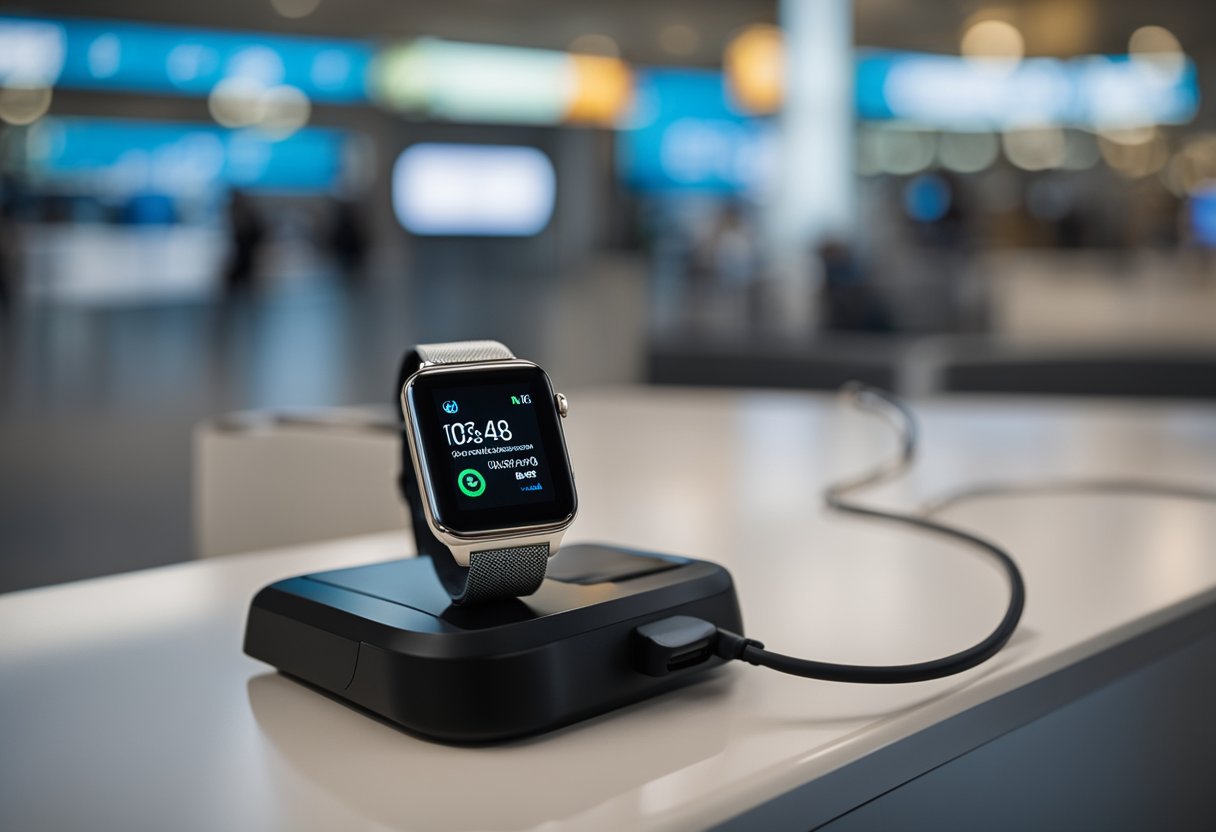
Wearable technology has swiftly become a reliable companion for travellers around the globe, infusing both convenience and innovation into their journeys. The crux of these devices remains their batteries, which dictate the usability and effectiveness of wearables on the move.
Challenges
- Duration: One of the primary challenges is battery longevity. Frequent travellers rely on extensive battery life to avoid the inconvenience of constant recharging.
- Degradation: Battery health deteriorates with each charge cycle, gradually diminishing the device’s stamina.
- Size: Additionally, the compact nature of wearables poses a constraint on battery size, which in turn limits capacity.
Progress
- Material Innovation: Research is leading to new battery technologies that promise higher energy densities and longer life spans.
- Efficient Charging: Developments in charging methods include faster, more efficient ways to power up, reducing downtime for travellers.
- Energy Harvesting: There’s also an exciting emergence of wearables that supplement battery life through solar charging and kinetic energy.
Technology advancements in the field of wearable tech are addressing these challenges head-on, ensuring that the travel experiences we provide continue to grow more seamless. They allow us to explore further and share deeper insights into the vast cultures and geographies we encounter.
The integration of innovative batteries, responsive to the needs of modern explorers, ensures that the devices we come to rely on will remain an essential part of our travel toolkit for years to come.
Prospects of Wearables in Enhancing Safety and Security
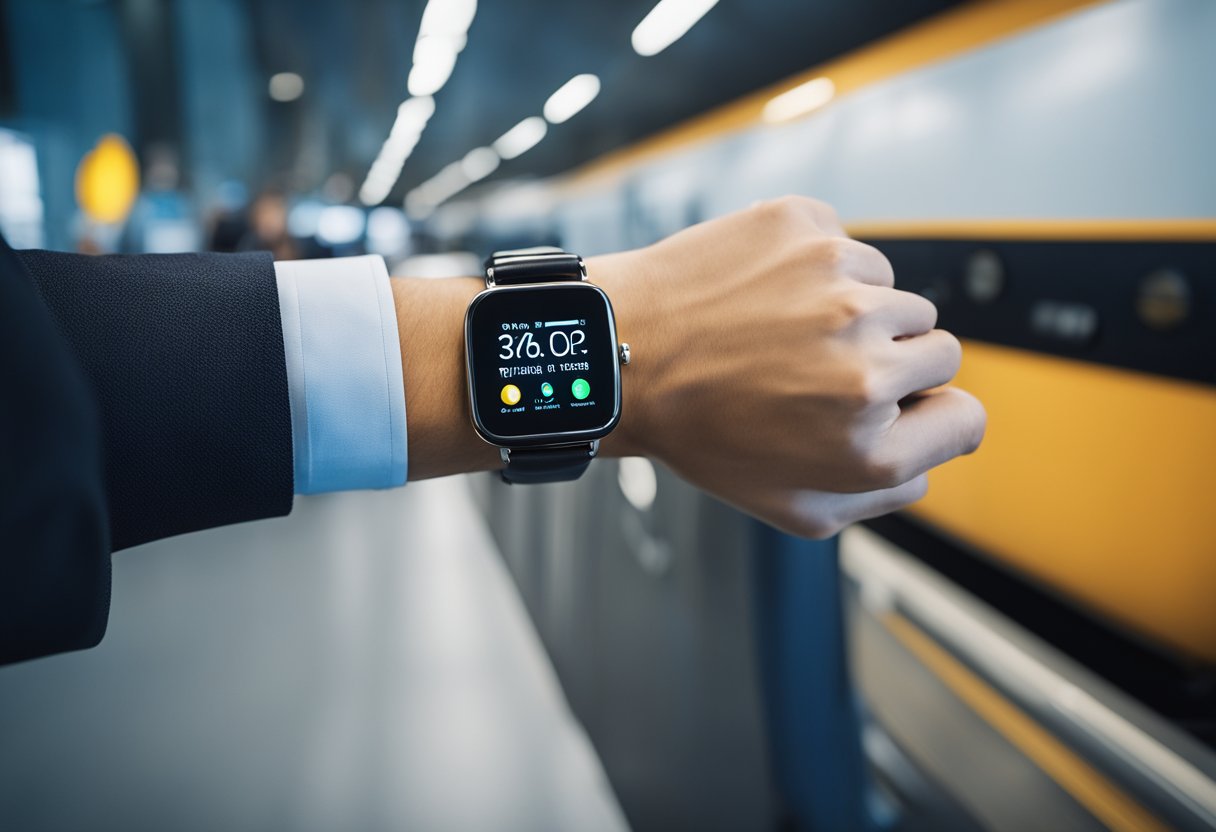
As we examine the voyage into the future of travel, the emergence of wearable technology offers promising enhancements for both safety and security within the travel industry. These wrist-worn gadgets are not just a fashionable trend; they serve as reliable companions that can profoundly impact our travel experiences.
- Location Tracking: Wearable wristbands equipped with GPS become powerful tools in ensuring travellers’ safety. In unfamiliar destinations, these devices provide real-time location updates to both the users and authorised parties, ensuring that help is just an arm’s length away in case of an emergency.
- Health Monitoring: Travel often involves adapting to new climates and activities that can strain our bodies. Wearable tech monitors vital signs, ensuring any health concerns are swiftly noticed and addressed. Moreover, these devices can alert us to take necessary precautions against environmental risks like extreme temperatures.
- Contactless Payments: The need for secure and convenient transactions is paramount. Wearable tech integrates seamlessly with payment systems like Square, allowing tourists to make purchases with a simple tap of their wrist, reducing the need for carrying cash or cards, and hence, decreasing the risk of theft or loss.
- Security Alerts: Our safety on holiday is bolstered by wearables’ ability to send discrete alerts in distressing situations. At the press of a button, travellers can notify emergency services or security personnel, making these devices indispensable.
- Travel Industry Integration: Travel companies incorporate wearable tech to offer enhanced customer service. It allows for smoother check-ins, streamlined boarding processes, and personalised travel experiences.
By adopting these smart devices, we step into a future where every aspect of our journey is not only enriched but also wrapped in a layer of unparalleled security and well-being. Wearable technology is progressing towards becoming an essential aspect of our travel toolkit, promising us peace of mind in the adventures that await.
Frequently Asked Questions
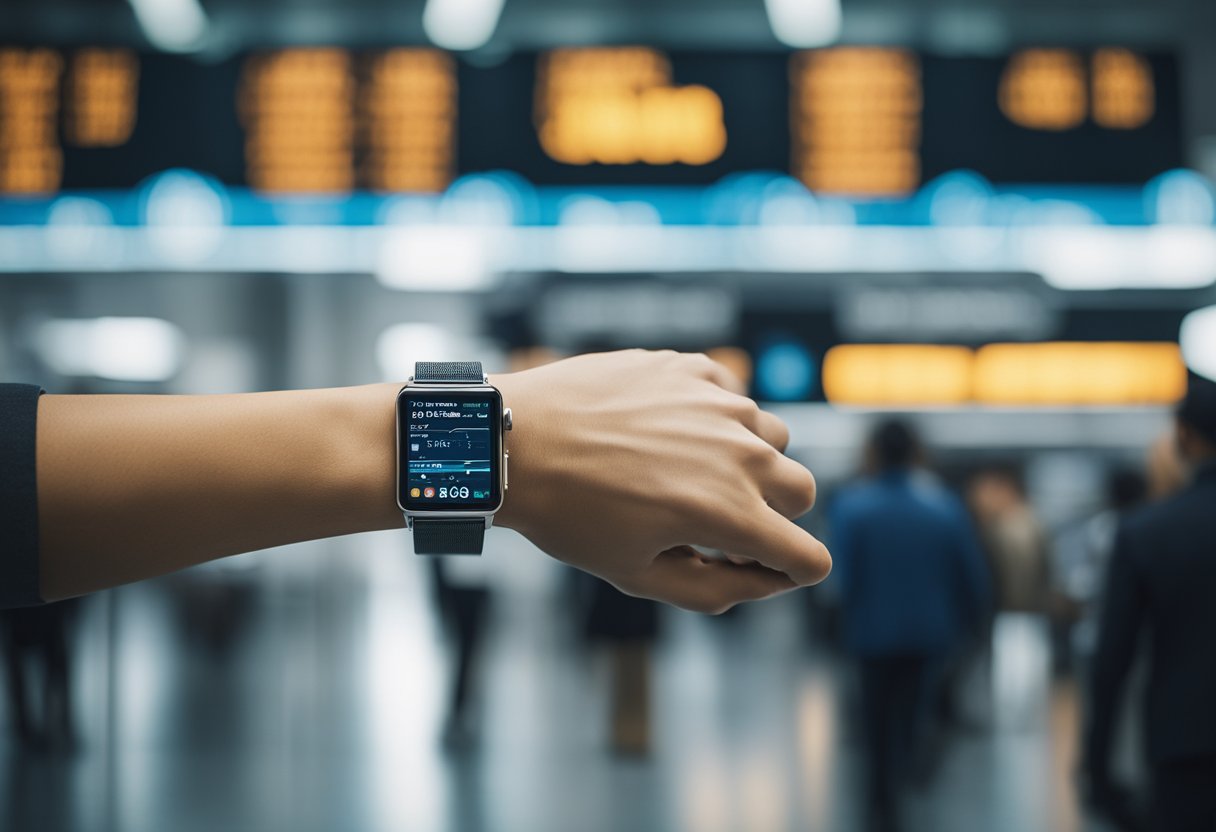
Wearable technology is rapidly becoming an indispensable travel companion, offering far more than just the ability to track fitness metrics. We’re here to shed light on how these devices are revolutionising the way we travel, prioritising convenience and personalisation.
How is wearable technology poised to transform travel experiences?
Wearable devices have the potential to significantly enhance the overall travel experience. For instance, they can serve as digital wallets, boarding passes, and provide real-time notifications on flight changes or gate assignments, ensuring we stay informed and stress-free.
What advancements can we expect in wearable devices that will benefit frequent travellers?
We anticipate future wearables to offer increased battery life and even more seamless integration with other travel services. Features like multi-language, real-time translation, and location-specific alerts about local customs or safety will be particularly beneficial for those of us who frequently travel.
In what ways will smartwatches and fitness trackers evolve to better assist travellers?
Smartwatches and fitness trackers are expected to evolve with more travel-focused applications, such as contextual travel guides and recommendations based on our location, activity, or time of day. They’ll likely also become more adept at monitoring our health, which can be crucial for adjusting to new time zones and managing jet lag.
How will wearable technology enhance safety and navigation for tourists?
Wearable technology will offer us enhanced safety through features like emergency SOS signals and real-time location sharing. For navigation, augmented reality displays on smart glasses or watches will provide us with intuitive directions, helping us navigate foreign environments with ease.
What role will wearables play in streamlining airport procedures and travel logistics?
Wearables are set to play a pivotal role in streamlining airport procedures by facilitating biometric check-ins and fast-track security clearances. This will quicken our progress through airports, reduce queues, and potentially even allow us to track our luggage through RFID chips.
How can wearables offer a personalised travel experience through real-time information?
By gathering data on our preferences and past behaviour, wearables can deliver personalised travel information, from recommending a dining spot to alerting us about a discounted cultural event in the area. This real-time, tailored information enhances our travel experience, making it uniquely ours.






